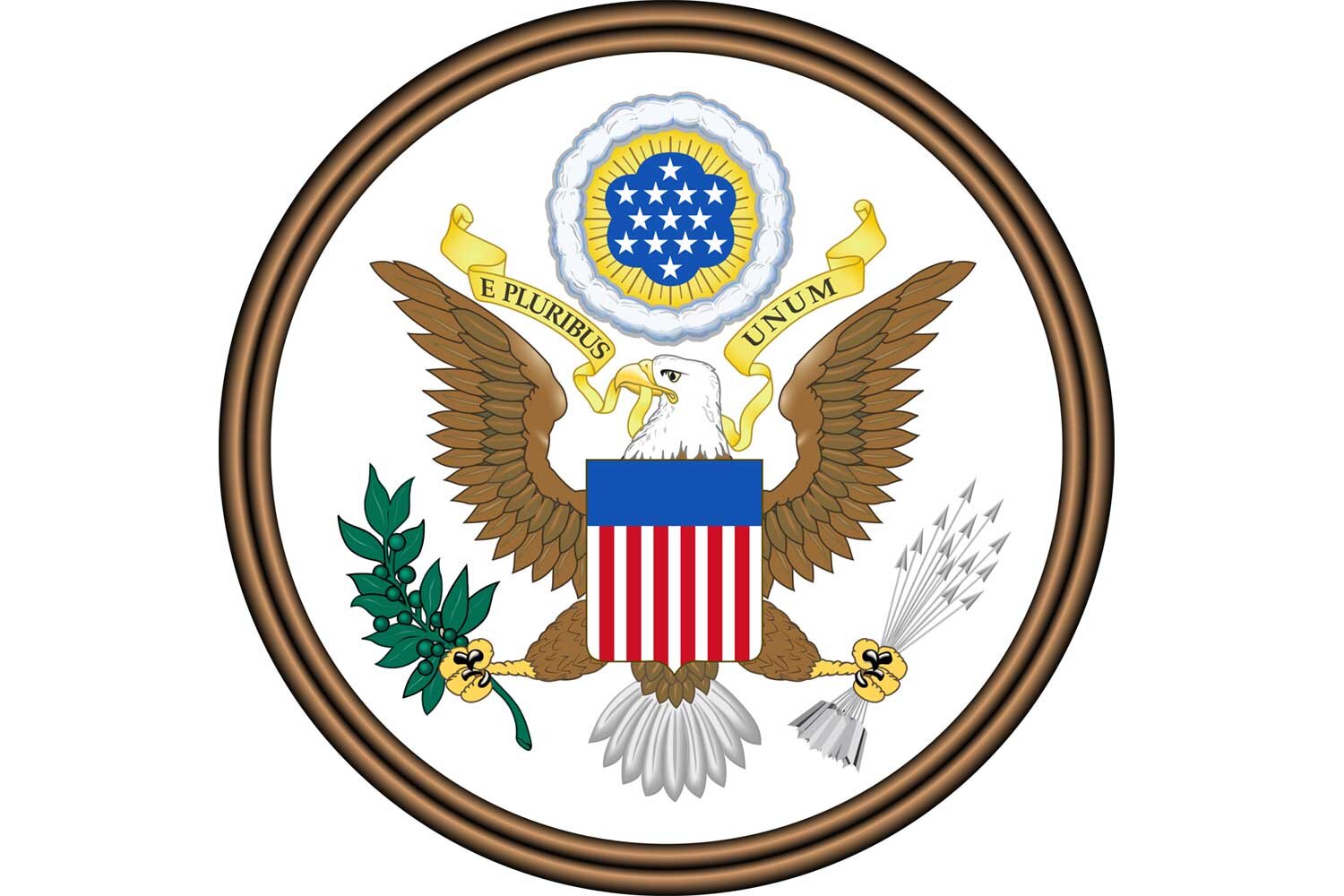A Bald Eagle, Olive Branches and Arrows - How the Great Seal Was Created
The Great Seal of the United States is the official seal of our country. It was approved in 1782 and is used on many of our official documents, most commonly on the back of our one-dollar bill. You may want to have one of these “George Washington’s” handy as you read this article to more easily follow along.
In the 18th century, all nations had a coat of arms or official seal that symbolized their country and was used to formalize international treaties and transactions. Not to be outdone, the Continental Congress decided we needed one as well, both an obverse (front) and reverse side.
The work to create a Great Seal for the United States began on July 4, 1776, when Congress asked Benjamin Franklin, John Adams, and Thomas Jefferson to design an official seal for our new country. Their effort would prove to be the first of three committees assigned by Congress over the course of six years before the final version was approved.
On August 20, 1776, this team of Founders submitted a design that included, among several features, Moses parting the Red Sea, which was not used. However, other elements were used such as the Latin motto “E Pluribus Unum”, “Out of Many, One”, The Eye of Providence in a triangle (the one above the pyramid) signifying God was watching over us, and the year 1776 (MDCCLXXVI) in Roman numerals (at the base of the pyramid).
Congress was not completely satisfied with the design and tabled the project for over three years. On March 25, 1780, Congress formed a new committee and this one included Francis Hopkinson, the man who also created the flag design we still use today.
His proposal included a shield of thirteen red and white stripes and the blue chief (top), a constellation of thirteen stars surrounded by clouds and glory, and the concept of olive branches for peace and arrows for war, although these were held by a maiden and a soldier, not an eagle.
Congress was still not satisfied, so they convened another committee more than two years later, on May 4, 1782. This group included, among others, William Barton, a design specialist. His design introduced an eagle, although not a bald eagle, an unfinished pyramid with thirteen steps indicating that America was not finished growing, and the overall design of the reverse, but not the mottos.
The third time was not a charm for Congress and on June 13, 1782, they gave all three proposals to Charles Thompson, the Secretary of Congress, and asked him to give the design a try. Thompson, a Latin scholar, took select elements as noted above from the three committees and created the obverse (front) design we know today, notably making the eagle a bald eagle and having it clutch thirteen olive branches and thirteen arrows.
Thompson also added the two Latin mottos found on the reverse of our seal, Annuit Coeptis, “He (God) Has Favored Our Undertaking”, over the pyramid, and Novus Ordo Seclorum, “A New Order for the Ages”, found under the pyramid.
He submitted his design to the Continental Congress on June 20, 1782 and it was approved the same day. Finally, on September 15, 1789, after the new Federal government had been formed under the Constitution, the United States Congress also approved the Great Seal as the official seal of our country.
WHY IT MATTERS
So why does the Great Seal of America matter to us today? Our Great Seal, along with our beautiful flag, are the main symbols of our wonderful country to the world. Importantly, we get a glimpse of where our Founders were philosophically when they were creating our nation.
We clearly see their esteem for God and His hand in our nation’s many blessings, as well as a respect for the wisdom of the Ancients, both Egyptians and Romans. Our Founders understood how it important was was to learn from the past. They also recognized that while we wanted peace, we must be prepared for war.
Finally, by creating the Great Seal, one more piece of the puzzle towards our becoming an independent nation state and taking our place on the world stage was completed. For that, we should be thankful.
SUGGESTED READING
“Founding Brothers: The Revolutionary Generation”, by Joseph Ellis, won the Pulitzer Prize for History in 2001. It is an excellent account of several of the leaders of early America and highly recommended.
PLACES TO VISIT
Did you know that Americans can tour the United States Mint production facilities in both Philadelphia and Denver? These places where our paper money and coins are made are open for public tours during the week. You will find the visit fascinating.
Until next time, may your motto be “Ducit Amor Patriae,” Love of country leads me.






One of the most beautiful flags from our nation’s founding era is the famous “Betsy Ross” flag with thirteen red and white stripes and thirteen stars in a field of blue. Called by many the first national flag of the United States, it was created by Betsy Ross in the city of Philadelphia in 1776.